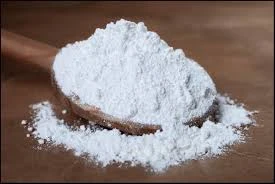
Understanding the Applications and Benefits of 35 Percent Phosphoric Acid in Industry
Exploring Phosphoric Acid Applications and Safety Concerns
Phosphoric acid, represented chemically as H₃PO₄, is a versatile inorganic acid that plays a crucial role in various industrial and agricultural sectors. When we refer to phosphoric acid 35, we typically indicate a specific concentration of this acid, which can have significant implications for its handling and application. In this article, we will explore the properties, applications, and safety considerations associated with 35% phosphoric acid.
Properties of Phosphoric Acid
Phosphoric acid is a colorless, odorless liquid that is highly soluble in water. At a concentration of 35%, it exhibits strong acidic properties, which can be utilized for various chemical reactions and processes. Phosphoric acid has three acidic protons, implying that it can participate in multiple types of reactions, making it a vital reagent in both laboratory and industrial settings.
Applications of Phosphoric Acid
1. Food and Beverage Industry One of the most common applications of phosphoric acid is in the food and beverage industry. It is frequently used as a food additive to enhance flavor and preserve food. For example, phosphoric acid is a key ingredient in soft drinks, where it provides a tangy flavor and acts as a preservative. The E number for phosphoric acid is E338, which denotes its approval as a safe additive by food safety authorities.
2. Fertilizer Production Phosphoric acid is also essential for the manufacture of fertilizers, particularly phosphate fertilizers such as monoammonium phosphate (MAP) and diammonium phosphate (DAP). These fertilizers are vital for enhancing soil fertility and promoting plant growth, thus supporting global agriculture. The production of phosphoric acid from phosphate rock through sulfuric acid digestion is a common process in the fertilizer industry.
3. Metal Treatment In the metal industry, phosphoric acid is utilized for surface treatment and cleaning processes. It is effective in removing rust and scale from metal surfaces and is often used in the preparation of metals before painting or coating. The acid creates a phosphate layer that enhances adhesion and corrosion resistance.
4. Pharmaceutical Applications In the pharmaceutical industry, phosphoric acid serves as a pH regulator and is involved in the synthesis of various medications. Its ability to maintain stable pH levels is crucial in the formulation of many drug products, ensuring their efficacy and safety.
phosphoric acid 35

5. Dental Products Phosphoric acid is a key ingredient in dental etching gels, which are used to prepare enamel surfaces for bonding. The application of phosphoric acid removes the smear layer and increases the surface area for better adhesion of dental materials.
Safety Considerations
Despite its extensive applications, it is essential to recognize that phosphoric acid, especially at a 35% concentration, can pose safety risks. It is classified as a corrosive substance, meaning it can cause severe burns upon contact with skin or mucous membranes. Inhalation or ingestion can lead to serious health issues. As such, workers handling phosphoric acid must adhere to strict safety guidelines.
1. Personal Protective Equipment (PPE) When working with phosphoric acid, wearing suitable PPE is critical. This includes gloves, goggles, and face shields to protect against potential splashes. Additionally, protective clothing should be worn to minimize skin exposure.
2. Proper Storage Phosphoric acid should be stored in a cool, dry place away from incompatible substances, such as strong bases and reactive metals. Containers should be clearly labeled to prevent accidental exposure or misuse.
3. Emergency Procedures In the event of an accidental spill or exposure, it is important to follow established emergency protocols. This includes rinsing the affected area with plenty of water and seeking medical attention if necessary.
Conclusion
Phosphoric acid, particularly at a concentration of 35%, plays a pivotal role in various industries, from food production to agriculture and pharmaceuticals. Its versatility and effectiveness make it indispensable, but its corrosive nature necessitates careful handling and adherence to safety protocols. Understanding both its benefits and potential hazards is crucial for anyone involved in its production or use. As industries continue to evolve, the significance of phosphoric acid will likely remain impactful, reinforcing its position as a fundamental chemical compound.
-
Aluminum Hydroxide: Quality Gels & Dried Gel AntacidNewsAug.31,2025
-
Buy High-Quality Trichloroisocyanuric Acid for Sale | TCCA 90% SupplierNewsAug.30,2025
-
Pure Sodium Dichloroisocyanurate Dihydrate | Powerful DisinfectantNewsAug.29,2025
-
Industrial Chemicals: Quality & Purity for Every IndustryNewsAug.28,2025
-
Nitrile Rubber Honoring Strict Production StandardsNewsAug.22,2025
-
Aspartame Ingredients Honoring Food Safety ValuesNewsAug.22,2025
-
Fertilizer for Balanced Plant NutritionNewsAug.22,2025
Hebei Tenger Chemical Technology Co., Ltd. focuses on the chemical industry and is committed to the export service of chemical raw materials.
-

view more DiethanolisopropanolamineIn the ever-growing field of chemical solutions, diethanolisopropanolamine (DEIPA) stands out as a versatile and important compound. Due to its unique chemical structure and properties, DEIPA is of interest to various industries including construction, personal care, and agriculture. -

view more TriisopropanolamineTriisopropanolamine (TIPA) alkanol amine substance, is a kind of alcohol amine compound with amino and alcohol hydroxyl, and because of its molecules contains both amino and hydroxyl. -

view more Tetramethyl Thiuram DisulfideTetramethyl thiuram disulfide, also known as TMTD, is a white to light-yellow powder with a distinct sulfur-like odor. It is soluble in organic solvents such as benzene, acetone, and ethyl acetate, making it highly versatile for use in different formulations. TMTD is known for its excellent vulcanization acceleration properties, which makes it a key ingredient in the production of rubber products. Additionally, it acts as an effective fungicide and bactericide, making it valuable in agricultural applications. Its high purity and stability ensure consistent performance, making it a preferred choice for manufacturers across various industries.





